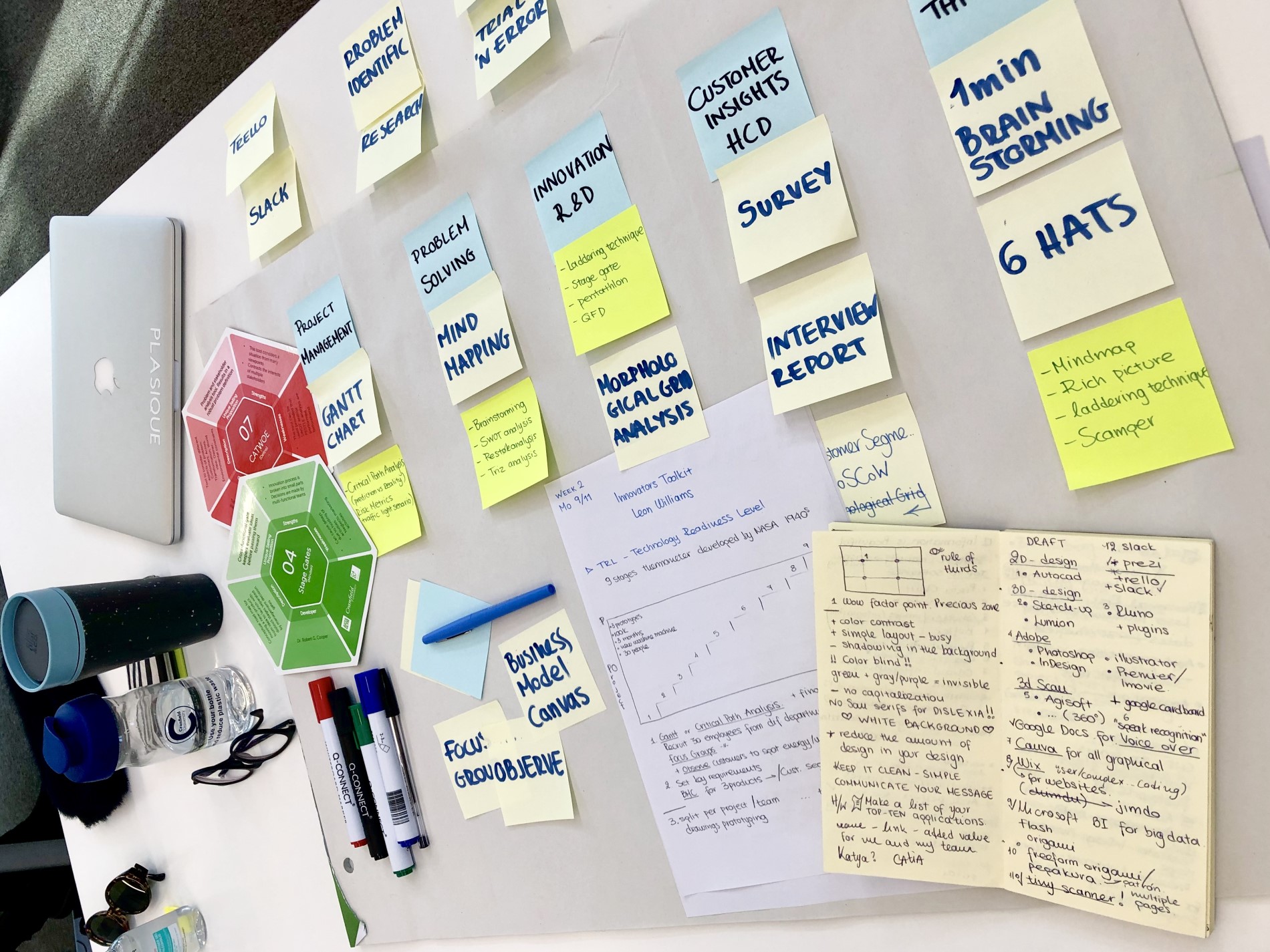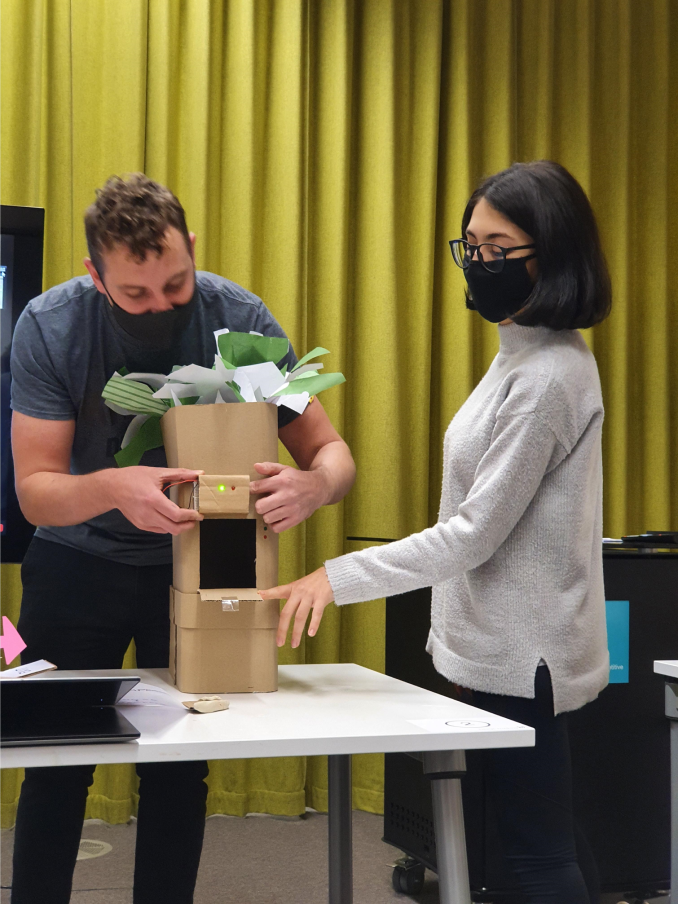What is Design Thinking?
05/01/2021

Design Thi…what?!
Yes, this term you’ve heard, but you can’t really remember when or from who, and you have no idea what exactly it means. By the end of this short blog, hopefully, you will know a thing or two, enough to change your mind about whatever boring thing you decided to study and re-apply to the best master course there is.
So, what is Design Thinking exactly?
Design Thinking is a mindset. Yes, that’s right, that’s as accurate as it gets. It is a way to creatively solve problems by embracing a variety of different methods, tools and techniques. Once you cultivate the design thinking mindset and master your toolkit I bet you will be able to address ANY PROBLEM. You heard me, ANY PROBLEM.
What is so special about it?
Design Thinking solves problems of the people – for the people. That’s what’s so special about it, you. Everything starts by understanding the people designing for. Not just what problems they are facing but also why. And keeping in mind that sometimes the most obvious solutions are the hardest to find just because of the self-imposed constraints we work within.

Who can use Design Thinking?
Everyone. Design Thinking is not something only designers use. It is a problem-solving method that every team within an organisation can take advantage of, from IT to R&D to HR to CEOs. Because having the ability to solve a problem when having no idea what the answer might be can be quite a skill.
How does MDes Design Thinking look at Cranfield?
The Master in Design Thinking at Cranfield is a very unique course within the Centre for Competitive Creative Design, known as C4D. It is a combination of modules taught by subject specialists, an interdisciplinary group project supported by an industry partner, and an individual thesis. The course is structured in such a way so that it equips the students with an understanding of the overall design thinking process, yet allow room for them to grow in their chosen direction through the group and individual projects.
The journey within the course starts by understanding human-centred design thus, the people you are designing for and the needs that your design is intended to meet (Module 1: Consumer Trends). After understanding how to design with empathy, it is time to start ideating. This stage includes the generation of multiple ideas to address the problem and the creation of rapid prototypes to test your assumptions. (Module 2: Design, Technology & Prototyping). Later, what should be examined is how your solution and its possible business model fits within a broader system. Moving away from linear into circular economy principles that aim to create value for the people, planet and economy. (Module 3: Whole System Design). Next, by diving deeper into the know-how of starting a business, you learn to identify opportunities for business growth and use data analytics to your advantage (Module 4: Creative Enterprise and Entrepreneurship). Last but not least, by acquiring project management skills you get the confidence to plan and execute your designs (Module 5: Introduction to Project Management).
Things about Design Thinking to put on a post-it
- Design Thinking is creative anarchy in a structured way.
- The difference between thinking and Design Thinking is in doing.
- Design Thinking is a mindset that allows you to go from nothing to something.
To learn more about the power of design thinking stay tuned and take a look at the following resources:
Categories & Tags:
Leave a comment on this post:
You might also like…
Keren Tuv: My Cranfield experience studying Renewable Energy
Hello, my name is Keren, I am from London, UK, and I am studying Renewable Energy MSc. My journey to discovering Cranfield University began when I first decided to return to academia to pursue ...
3D Metal Manufacturing in space: A look into the future
David Rico Sierra, Research Fellow in Additive Manufacturing, was recently involved in an exciting project to manufacture parts using 3D printers in space. Here he reflects on his time working with Airbus in Toulouse… ...
A Legacy of Courage: From India to Britain, Three Generations Find Their Home
My story begins with my grandfather, who plucked up the courage to travel aboard at the age of 22 and start a new life in the UK. I don’t think he would have thought that ...
Cranfield to JLR: mastering mechatronics for a dream career
My name is Jerin Tom, and in 2023 I graduated from Cranfield with an MSc in Automotive Mechatronics. Originally from India, I've always been fascinated by the world of automobiles. Why Cranfield and the ...
Bringing the vision of advanced air mobility closer to reality
Experts at Cranfield University led by Professor Antonios Tsourdos, Head of the Autonomous and Cyber-Physical Systems Centre, are part of the Air Mobility Ecosystem Consortium (AMEC), which aims to demonstrate the commercial and operational ...
Using grey literature in your research: A short guide
As you research and write your thesis, you might come across, or be looking for, ‘grey literature’. This is quite simply material that is either unpublished, or published but not in a commercial form. Types ...






